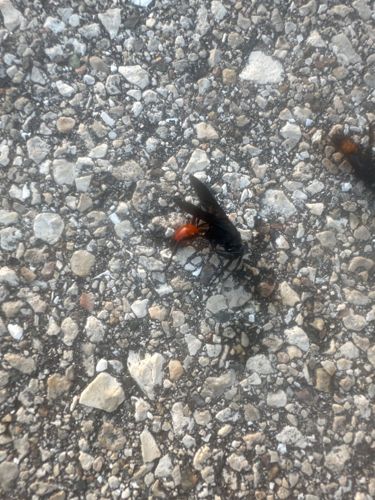Velvet Ant (likely a female Dasymutilla occidentalis, also known as Eastern Velvet Ant or Cow Killer)
Scientific Name: Dasymutilla spp. (specifically Dasymutilla occidentalis is common in the eastern US with this coloration)
Order & Family: Order: Hymenoptera, Family: Mutillidae
Size: Females typically range from 0.75 to 1 inch (1.9 to 2.5 cm) in length. Males can be slightly smaller or larger.

Natural Habitat
Velvet ants are found in sandy areas, open fields, grasslands, forests, and suburban yards where host insects are present. They prefer warm, dry climates.
Diet & Feeding
Adult velvet ants feed on nectar, water, and sometimes honeydew. The larvae are parasitic, feeding on the larvae and pupae of other insects, primarily ground-nesting bees and wasps.
Behavior Patterns
Velvet ants are solitary wasps. Females are wingless and resemble ants, while males have wings. Females are known for their painful sting, which earned them the nickname 'cow killer,' though it is rarely fatal to livestock. They are active during the day, especially in hot weather, and are parasitoids, laying their eggs on the larvae or pupae of other insects, particularly ground-nesting bees and wasps. The velvet ant larva then consumes the host.
Risks & Benefits
Risk: The primary risk is a very painful sting from the female velvet ant. While not medically significant for most people (unless allergic), the pain can be intense and last for several minutes. They are generally not aggressive unless provoked. Benefit: As parasitoids, velvet ants help control populations of other ground-nesting insects, including some pest species, contributing to natural pest control.
Identified on: 8/21/2025